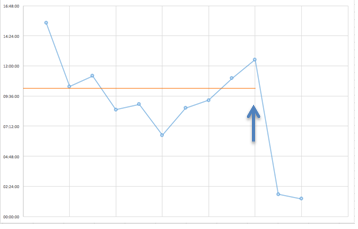 Introduction: Basic procedures such as phlebotomy and cannulation are commonly performed in children admitted to hospital by junior doctors. In our tertiary teaching hospital, children are admitted to one of seven wards after initially been seen on the admission unit. Out of hours junior doctors cover a number of wards, often attending wards not worked on in-hours.
Introduction: Basic procedures such as phlebotomy and cannulation are commonly performed in children admitted to hospital by junior doctors. In our tertiary teaching hospital, children are admitted to one of seven wards after initially been seen on the admission unit. Out of hours junior doctors cover a number of wards, often attending wards not worked on in-hours.We highlighted a problem that finding equipment was frequently proving difficult and an in-effective use of time; partly due to varying equipment locations on each ward. We set out to streamline the process by using a standardised procedure trolley.
Methods: We surveyed junior doctors to identify equipment that would be used frequently enough to form our prototype trolley. We then timed junior doctors to find a pre-set list of equipment; using the prototype trolley, on a ward they were familiar working on and on a ward they haven’t been before.
Following this we agreed with ward managers and housekeepers to roll out the standard trolley to four of our wards and the admission unit.
Results: Junior doctors on an unfamiliar ward found the required equipment after an average of 10min 13sec (6min28 – 15m26).
On a ward familiar to them this reduced to 5min 31sec (2m49 – 9m18).
Using our prototype trolley the average reduced further to 1min 35sec (1m24 – 1m46).
In 24 hours junior doctors undertook 21 procedures on our wards, nearly 150 in a week.
In reducing the average time from 8min 17sec (combining unfamiliar and familiar results) to 1min 35sec would save 6min 42sec per procedure.
This would result in nearly 17 hours of junior doctor time saved in a single week.
Following the trolley roll out we are currently auditing the outcomes; to ensure the trolleys remain stocked as designed and junior doctors are satisfied.
Conclusions: We highlighted a problem with undertaking a common procedure in our patients. We designed a solution, tested its efficacy and engaged stakeholders in its implementation. We have shown how a simple solution could save nearly 17 hours of junior doctor time a week, improving not only patient care but junior doctor satisfaction.

